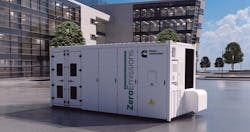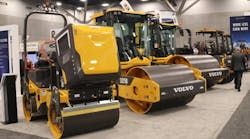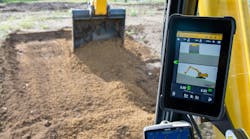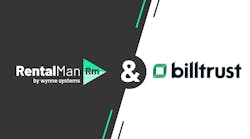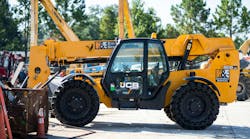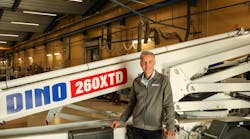The Rental Market is Growing: Is Your Business Keeping Pace?
According to ARA data projections, the rental market will grow at a 4- to 5-percent rate over the next five years. That’s really good news for our industry. However, if your business is like most, you have experienced the rise in overhead costs which puts downward pressure on your profitability. For a privately held business, it is unlikely that you have any economic leverage over your competition in managing overhead costs. You can’t control the cost of insurance, fuel, interest rates, utilities, salaries and wages, and the cost of new equipment.
Given these facts, the primary way to negate rising expenses and overcome low margins is through increasing revenues. You have full control over this aspect of your business.
As John F. Kennedy once said, “a rising tide lifts all boats.” If the rental industry is growing at a 5 percent annual rate, what does that mean for your business? Will you automatically get pulled along and see an increase in revenues, or do you have to intentionally participate? What happens if you don’t? Does your competition gain revenues and market share that potentially had your name on it? If you were going to participate with the rising tide, what would that look like?
Sharing from personal experience, growing a business can be euphoric as it is feeding the entrepreneurial spirit of an idea being realized. However, uncontrolled growth can lead you down a pathway to insolvency. Unbelievably, you can run out of operating capital (short term cash) while on your way to record growth in business. One of my favorite quotes heard over the years: “The best thing about not having a business plan is when you go out of business, it will come as a total surprise!”
Let’s consider the fundamentals that need to be in place before you intentionally grow your business. One thing you can absolutely count on, rapid sales increase will put pressure on all your operational processes. Remember the objective in growing revenues is to minimize the impact to overhead so you can increase margins. Basically, it is trying to do more with the current overhead structure.
Suppose you are successful in attracting more revenues. How would your current staffing levels hold up? How would your current facility layout accommodate the increase in fleet? How would your current check-out and check-in procedures hold up? Do you have the manpower and skill sets within your service department to withstand the additional demand? Do your current finances allow you to even consider a significant growth effort? How do you know for sure?
As you can see, there are many aspects of your business to review before just adding some additional fleet and hoping for the best. Vital to success is having a clearly defined future vision. Where do you want to be in the next three to five years? My experience is that most small business owners might have an idea rambling around in their head, but it’s not in writing and it’s usually half-baked. They are consumed with managing the daily activities and cannot see where their efforts are leading them.
Once again from firsthand experience, not all market opportunities are good ones. When customers ask you to invest in machines they don’t want to own, they are inviting you to take a financial risk they don’t want. This sometimes ends up with white elephants in your rental fleet or failing service efforts that are draining your limited resources.
You need a vision
Having a vision is so important to growing a sustainable business. If you haven’t taken the time to reflect on where your business is headed or where you want it to go, STOP immediately and get this in writing. A vision statement provides the direction and describes what the founder wants the organization to achieve in the future. It’s more about the “what” of a business. It is different from a mission statement, which describes the purpose of an organization and more about the “how” of a business.
In addition to the vision statement, you need to personally communicate with each employee and invite them along for the journey. Change management is a tall order and it is imperative that your employees are supportive of your growth plan and understand that it might get difficult along the way, but in the end life will be better for the company and create more opportunities for the individual employees.
Now that the vision has been cast and we know where we want to go, it is important to clearly understand where you are starting from. This requires a “baseline” for the company. Where are you today in the broadest sense of the word and what are you good at and what are you challenged with every day?
An internal review called a SWOT analysis is in order. A SWOT analysis is an assessment of all aspects of your business: what are your company’s STRENGTHS, what are the company’s WEAKNESSES, and from an external assessment, what are the OPPORTUNITIES that you see in the marketplace. And finally what are the THREATS to your business. I highly recommend that you invite your entire staff to participate in this assessment, especially the strengths and weaknesses. They are highly aware of things that you don’t know. Key aspects to review include but are not limited to:
- Stability of the business – Stability is the opposite of chaos and growing pains will put pressure on relationships, communications, finances, processes and all aspects of the business and the very culture of your business that you have worked hard to establish. Are there any internal distractions that will get in the way? Get your house in order before you begin to disrupt it!
- Defined processes – are the processes within your business as well defined as they should be? Where are the inefficiencies today? Is it at the rental counter? Is it with the check-in and check-out process? What about getting machines through the service area in a timely manner? These areas will be put under pressure as you try and grow your business.
- Facility – Does your current facility really allow you to grow? Is there enough outside storage or inside storage area depending on your type of equipment? What about service area to prep and maintain machines when they come back from rent? Believe me, even the wash rack can become the major choke point when trying to grow your business. Think about your outbound process as well as your return area and service area as this will be put under pressure as soon as you grow the fleet.
- Staffing / Training – Do you have adequate staffing to support your projected growth? Hiring the right personnel just in time doesn’t always work out. ALWAYS be on the lookout for talent. It is the piece of the puzzle that will ultimately allow you to be successful. How do you justify another rental coordinator, or a service technician or even a delivery driver? How difficult is it to find quality help? Concerning the help you have already, do they have well defined job descriptions? Are they compensated in such a way that they will embrace growth?
What about your internal training efforts as you increase your staff? Do you have a plan to accelerate their learning, so they can be effective earlier? These are real challenges that impact operational efficiency and will certainly get tested during a growth period. Improperly trained workers in a high-pressure environment undoubtedly will make mistakes that in rental can lead to poor customer service, low fleet utilization, damaged equipment and in worst-case scenarios injuries to the employee or the customer.
- Rental fleet utilization – How is your current rental fleet performing? Is your financial utilization in the range that it should be? What about your time utilization? How hard is your fleet working to produce the current revenue stream? Is there any more opportunity with your existing fleet to generate more revenues? If your fleet is not being maintained properly or is working extremely hard, it is possible that you might need to set aside capital to replace existing machines to maintain current rental revenues.
- Transportation – depending on your fleet mix, you might need to add additional assets in transportation fleet, i.e. trucks and trailers to be able to accommodate the additional fleet or larger items. Do you have multiple options for your customers when they are deciding the best way to get the equipment transported? Affordable transportation is an important part of the service you provide.
- Assets – Do you have money tied up in non-revenue-producing assets? Do you have rental equipment that is not producing? Do you have merchandise or parts inventory that needs to be liquidated? Now is the perfect time to make this assessment and turn it into cash. What about your accounts receivable, how current are your customers? Is there any opportunity to make improvements and collect your money faster?
- Debt to Equity – A key measurement in determining whether you can grow your rental fleet through financing. Traditional lenders are always careful to scrutinize the amount of equity you have in the business, versus how you are growing through debt. Lenders want you to maintain a healthy balance. Certainly, they don’t want all the risk. You need to know in advance how much additional capacity you have for debt financing.
After completing the SWOT analysis, it will either give pause or acceleration to your growth plans. You most likely have identified some aspects of your business that will crumble under pressure, and need immediate attention. You may also have identified market conditions or competitive forces that are creating a tight window on the growth opportunity that you envision.
Strategic choices
Assuming that you’re ready to move ahead, you now have strategic choices to make. Do you grow your business through simply adding more machines like you already have? Do you expand your service area and just rely on your existing fleet? Should you target another market segment and try to gain their business using your existing resources? Should you consider adding categories of equipment that you’ve never had before? Is it time to consider another location? Let’s take a closer look.
- Fleet growth – I have seen it firsthand, as the founder’s family ages and expands, the need for funds from the business grows. This is usually at the expense of growing the business and the existing rental fleet can only produce so much revenue. Without growing your fleet, you have an unsustainable business model. Competitive forces are working against you with potentially newer equipment, possibly cheaper rental rates, better marketing campaigns, and possibly higher wages for your employees. You have rising overhead costs, and with a static rental fleet, it will just be a matter of time until that fleet will not generate enough revenues to cover your expenses. A few options to consider with fleet growth:
Option A: Adding more equipment of the same type is obviously the easiest to do. Nothing new to learn, no marketing required, just more of the same. Key questions to consider: “Does your current fleet mix throw off enough financial utilization in each category, or do you need some more profitable items?” “Should you be focused on attracting more of the same type of customers, or should you focus on additional markets?” “Will adding more of the same equipment enable you to attract more customers?”
Option B: Adding new categories of equipment can be exciting, but also risky if you don’t do your homework in advance. If you have a large landscaper customer base, is it wise to consider scissor lifts for instance? I would not suggest a wide departure from what you are good at. Look for complementary items that will strengthen your existing customer base first. If you are good with the utility contractors, you probably shouldn’t consider scaffolding even though it is highly profitable. Take the time to talk with existing and prospective customers BEFORE spending tens of thousands of dollars on equipment that you will not be able to properly market and support.
- Targeting a market segment – Start with having your customers identified and organized in your computer according to their business type, for instance plumbers, electricians, landscapers, road contractors, general contractors, or mechanical contractors. Your list should have a minimum of 15 to 20 market segments. Once the customers are all assigned, then run some reports from the last 24 to 36 months according to revenues from each segment. This will begin to show you who you are currently doing business with and where there are gaps.
The next step is to review your fleet mix to identify what machines you already have that could also be used by another segment of customers. Having an outside sales rep would certainly speed up the process, as it usually requires a face-to-face conversation with a customer to learn about their business. In these customer visits you need to learn about their processes, equipment requirements, frequency that they might need to rent machines along with their overall expectations from a rental supplier. Once you gather this information across a sampling of similar contractors, you can make an informed decision whether your current resources align very well. Don’t try to sell your companies’ services during this initial visit as you might embarrass yourself if you are not prepared from the beginning to execute to their level of expectations. You can’t properly serve all customers, even though you might have a few items they use. Don’t react here, be strategic.
- Adding another location – This is a major consideration and needs to be well researched. It will cost you some time and money, but nothing compared to making a capital commitment that fails and impacts your existing business. Just because you have had success in one location does not mean that it is transferrable to another. There are external forces at work that may be in your favor at your current location, and in fact are not in your favor at the proposed new location.
Planting a new rental store is not a geographical strategy, but rather market driven. I’ve counseled with a failing business owner who explained to me the reason he chose his location was that fact that he was 30 miles from the nearest rental competitor. He did not understand markets and thought it was about a fenced-in yard with rental equipment. You know: “build it and they will come.”
Start by asking these questions: Is this a project-based development that I could put a temporary location in to service the project? What would keep a competitor from coming to the same area? Can you get there first? Can you position yourself well enough before a national rental company shows up? Do you have any current deliveries going into that area? How much of your current business is coming from this area? Could you possibly service this area through additional delivery services even if you discounted the fees to test the market? Are you looking at your customer zip codes to see where your customers are coming from? Could you gain any synergies with your current location(s)? How so?
To be a market leader in rental requires a strong logistics play as customers really value convenience. This ultimately means the right equipment at the right place at the right time. Store locations and delivery capabilities really do matter in growing your business. If you are still considering adding a location, make sure you can answer these questions as well:
- Where is the growth in the market going and what’s driving it? Is it sustainable?
- What market segments and new customers might you gain?
- What competition is already in the area or where is it likely to come from?
- What advantages do they / will they have?
- How will this new location give you any scale? (gain leverage?)
- Will this new location add value to your existing operations? How so?
- What is the projected cost of monthly overhead? Is it similar to your current costs?
- What additional fleet investment will you have to make, or do you have enough current inventory to get it started?
- What is the projected break-even point? How does that compute in terms of size of rental fleet?
Word to the Wise – the profitability of your business does not remain the same as you grow. It is not linear. This means that you can have a successful, efficient operation and on your way to growing your business to the next level, you will digress. You must be prepared to enter an “unsafe zone” where your margins and most likely your cash-flow are put under pressure. Fast growth, regardless of profitable margins can have huge negative impact on your available cash. Make sure you have identified the next safe landing zone and run like the wind to get there. CAREFUL PLANNING and EXECUTION REQUIRED!
Larry Kaye is a second-generation rental industry veteran and has had multiple businesses over his 35-year career. He has served on the ARA Board of Directors and currently is President of Script International which does consulting work for OEM’s, equipment dealers and rental stores.
